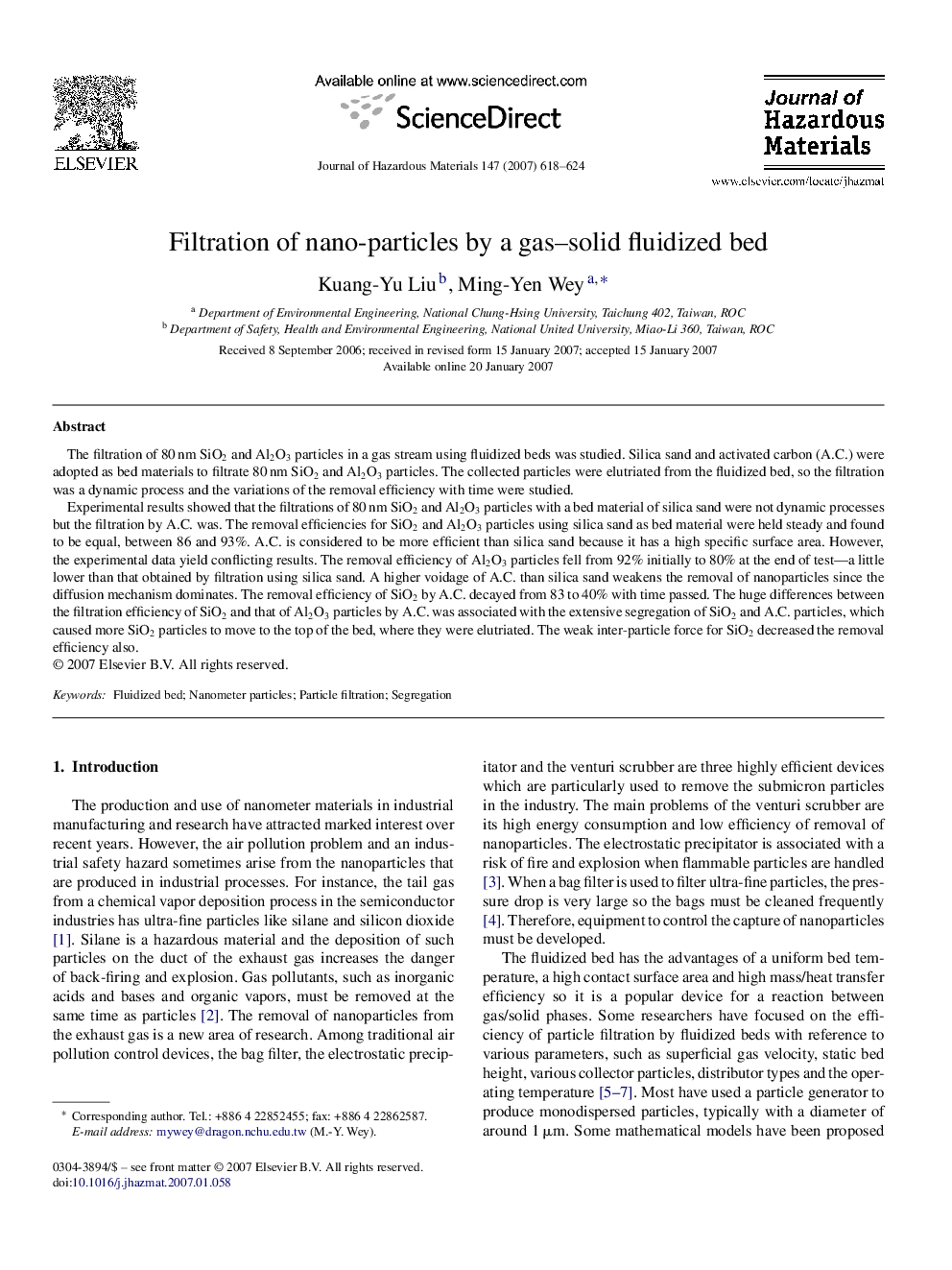| Article ID | Journal | Published Year | Pages | File Type |
|---|---|---|---|---|
| 584161 | Journal of Hazardous Materials | 2007 | 7 Pages |
Abstract
Experimental results showed that the filtrations of 80Â nm SiO2 and Al2O3 particles with a bed material of silica sand were not dynamic processes but the filtration by A.C. was. The removal efficiencies for SiO2 and Al2O3 particles using silica sand as bed material were held steady and found to be equal, between 86 and 93%. A.C. is considered to be more efficient than silica sand because it has a high specific surface area. However, the experimental data yield conflicting results. The removal efficiency of Al2O3 particles fell from 92% initially to 80% at the end of test-a little lower than that obtained by filtration using silica sand. A higher voidage of A.C. than silica sand weakens the removal of nanoparticles since the diffusion mechanism dominates. The removal efficiency of SiO2 by A.C. decayed from 83 to 40% with time passed. The huge differences between the filtration efficiency of SiO2 and that of Al2O3 particles by A.C. was associated with the extensive segregation of SiO2 and A.C. particles, which caused more SiO2 particles to move to the top of the bed, where they were elutriated. The weak inter-particle force for SiO2 decreased the removal efficiency also.
Related Topics
Physical Sciences and Engineering
Chemical Engineering
Chemical Health and Safety
Authors
Kuang-Yu Liu, Ming-Yen Wey,
